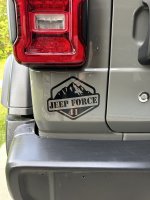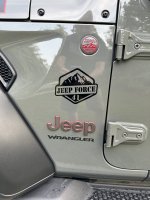jeeeep
Hooked
Follow up to my post #23,393 transmission fluid change and PPE pan swap, needless to say it's a big disappointment and falls into the category of cold air intake.
It did nothing to bring down the temperatures of the transmission fluid.
The extra capacity might make the fluid last a little longer and the thicker pan may hold up better since I have no skid plate but, not something I want to test.
I would not recommend the upgrade as it did not provide the "marketing" benefits.
It did nothing to bring down the temperatures of the transmission fluid.
The extra capacity might make the fluid last a little longer and the thicker pan may hold up better since I have no skid plate but, not something I want to test.
I would not recommend the upgrade as it did not provide the "marketing" benefits.


